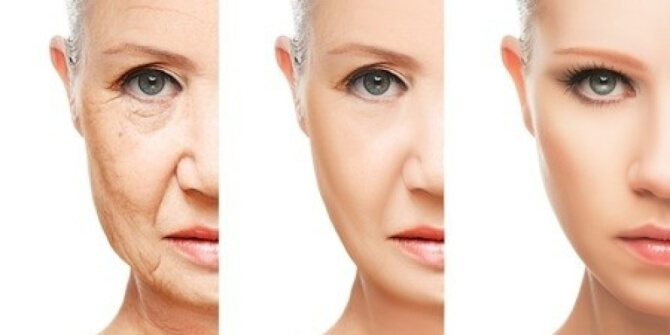This series of articles focuses on all things tanning: prevention, protection and after care. We want to get you excited for the summer ahead! In this article we will be uncovering how tanning impacts on different skin types and tones.
How do I identify my skin type?
Certain skin types are more prone to becoming damaged from the sun so it’s important to know your skin type so you can protect your skin.
There are 6 different skin types, each with a different reaction to ultraviolet radiation.
Before we take you through the tanning with different skin types, lets first identify if you have dry or oily skin and how these skin types react in the sun differently.
Dry to sensitive skin
Heat from the sun dries out the skin, which removes essential oils and water. Dry skin will feel hot, tight and uncomfortable in the sun. It may also flake or peel when rubbed. If you have dry skin you will be more prone to visible signs of ageing such as lines, wrinkles and crow’s feet.
The sun is known to be good for us (we need our Vitamin D!), but if you overdo it then it can be counterproductive and do more damage to your skin than good.
Oily Skin
Oily skin is greasy and shiny, due to the excess production of sebum, and is prone to blackheads, pimples and acne.
You may also notice that your skin can become tight under the sun. The sun is known for drying out your pores, which will cause your skin to become less oily. The UV rays at first cause the oil in your sebaceous glands to dry up slightly. You may notice that your skin is less oily to start with, but this is only temporary and soon you will notice your skin producing more oil.
Take note that tanning is not the solution for clear, beautiful and glowing skin.
Combination Skin
This type of skin is when two or more different skin types occur on your face at the same time.
Combination skin is very popular but before identifying your skin as combination, check the different parts of your face.Some parts of your face will appear dry or flaky, while the center part of your face, nose, chin, and forehead (known as the T-zone) will be oily.
Different types of skin colours under the sun
Skin type 1: White skin
Always burns and never tans. Very pale, porcelain or ivory toned skin.
You are at the greatest risk of skin damage so it’s important to make sure that you protect your skin.
Even when the sun isn’t shining, be sure to wear at least SPF 30+ everyday to protect your skin from UV rays.
Skin type 2: Beige skin
Burns easily, tans minimally and is very sun sensitive.
Your skin type is at a high risk of skin damage so you must wear a minimum of SPF 30+ everyday to help protect your skin from the sun. Although you may be able to tan occasionally, you may notice that your skin will flake and peel after a few days. Keep your skin moisturised and stay in the shade as much as possible.
Skin type 3: Light brown skin
Sometimes burns, tans gradually to light brown, minimally sun sensitive.
Even though your skin tans, this is still a sign of UV damage, which can lead to harming your skin causing it to become vulnerable. Remember that a tan is not a healthy glow. Protect your skin with a minimum of SPF 30 everyday (even when the sun isn’t shining!).
Skin type 4: Medium brown (Caramel) skin
Burns minimally, always tans to a moderate brown, minimally sun sensitive.
Your skin tans quickly without burning, which may sound great but you still need to use an SPF of at least 15 on your skin everyday. Protecting your skin against harmful UV rays is an absolute must for looking after your skin the right way.
Skin type 5: Dark brown skin
Rarely burns, tans well and skin is not sensitive to the sun.
Your skin tans quickly without burning but you must make sure that you wear SPF 15 everyday to protect your skin from UV rays. Your skin type will usually be oilier as opposed to other skin types and you may be prone to more breakouts. Keep your skin out of the sun as much as possible, especially during peak times of the day.
Skin type 6: Black skin
Never burns, deeply pigmented and skin is not sensitive to the sun.
Your skin offers more protection against UV radiation that other skin types mentioned. It’s important to note that your eyes are more vulnerable to damage from UV radiation so wear a hat and sunglasses and be sure to avoid excessive exposure from the sun. You should still wear an SPF 15 everyday even when the sun isn’t shining.
Exposing your face to the sun
As mentioned in the above, you should use sunscreen everyday no matter what your skin type. The darker your skin the lower SPF you can get away with, but you should still wear sun cream.
Wearing sunscreen all year round will help to prevent and stop wrinkles and other signs of ageing skin.
Oily skin that is prone to breakouts should opt for a light SPF cream.
If your skin is sun sensitive and dry, choose a cream that is made specifically for your skin type. Choose a product with active ingredients such as titanium dioxide or/and zinc oxide.



